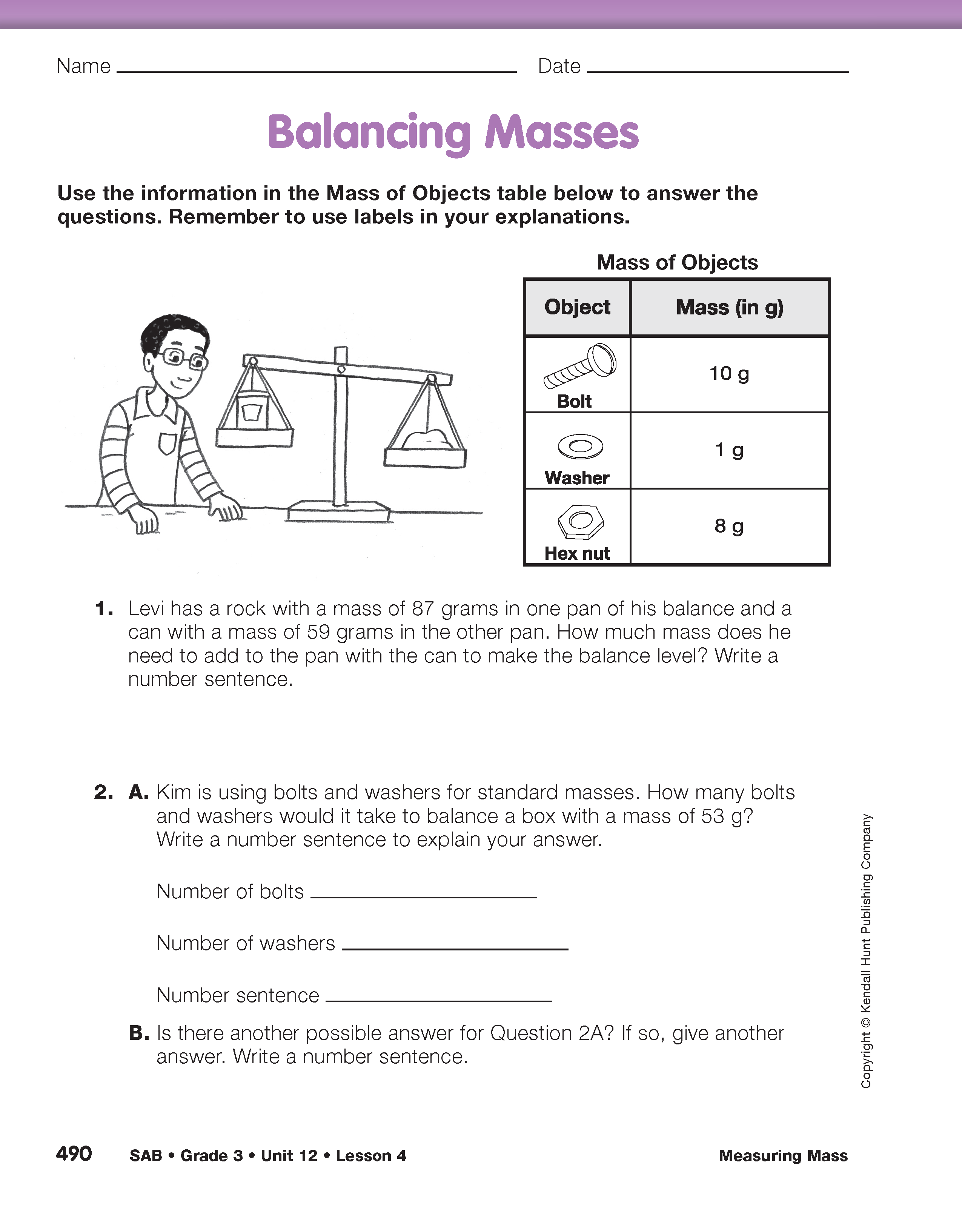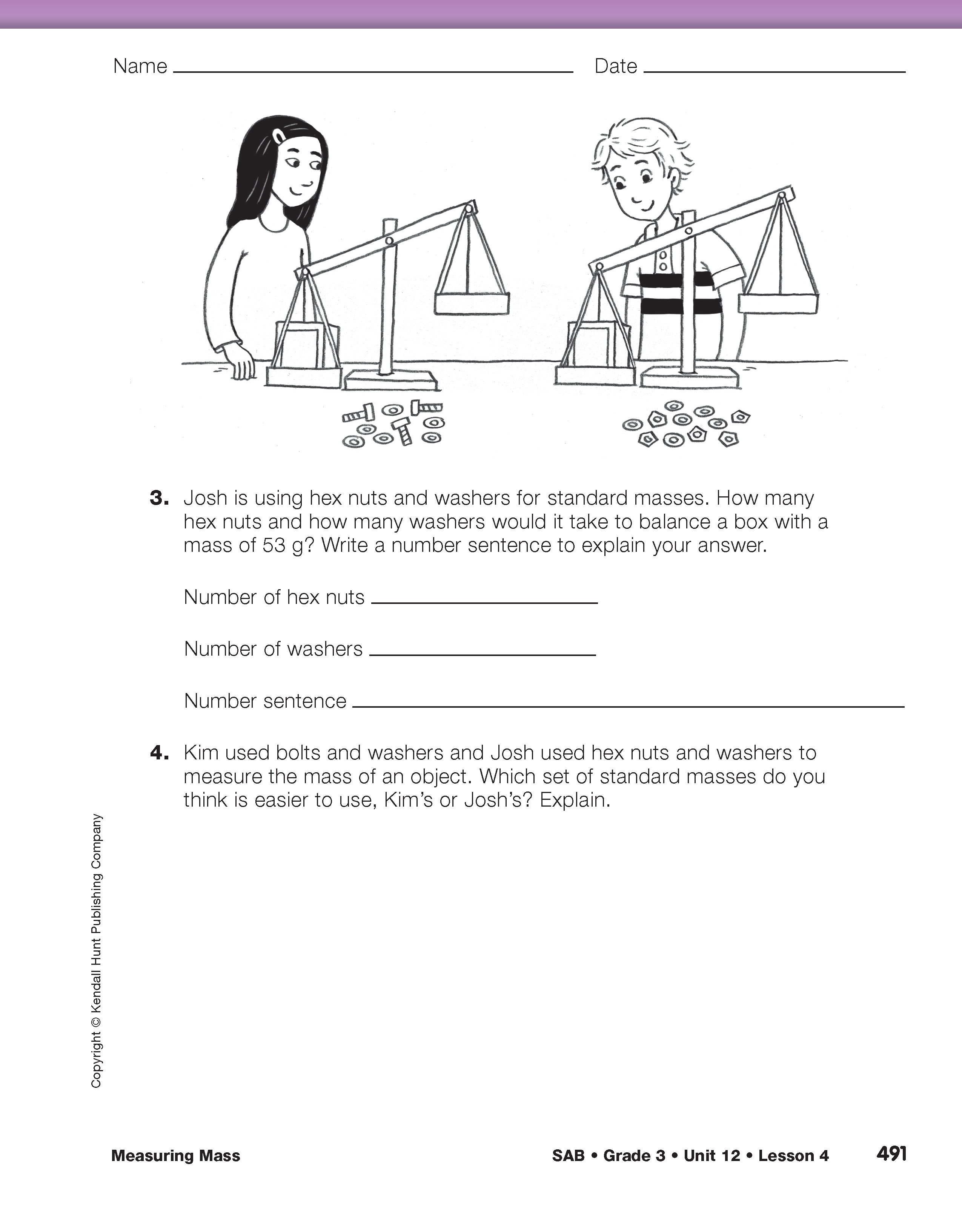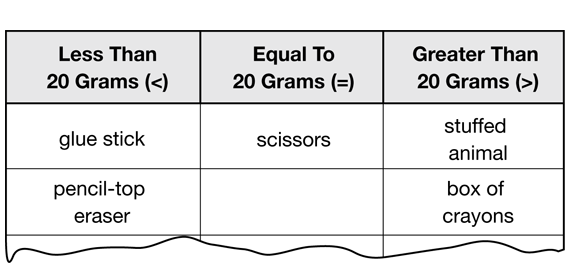Measuring Mass
Est. Class Sessions: 2–3Summarizing the Lesson
When students have completed the work on the Number Sentences pages, ask several volunteers to share their true number sentences for Question 1A, 4 × 5 + 2 × 10 = ![]() . Choose volunteers so that a variety of answers can be heard.
. Choose volunteers so that a variety of answers can be heard.
As each student writes his or her number sentence on chart paper, ask the class:
Repeat the questioning. Next, show a display of the chart on the Compare to 20 Grams Master. Ask students to list examples of items they measured in Question 4 that were less than, equal to, and greater than 20 grams. Classify the objects by recording them in one of the three columns. See Figure 2.
Assign the Balancing Masses pages in the Student Activity Book to students. These pages ask students to apply what they have learned about using the two-pan balance to solve problems that involve different standard masses. For each problem, students are to write number sentences to show their work.















